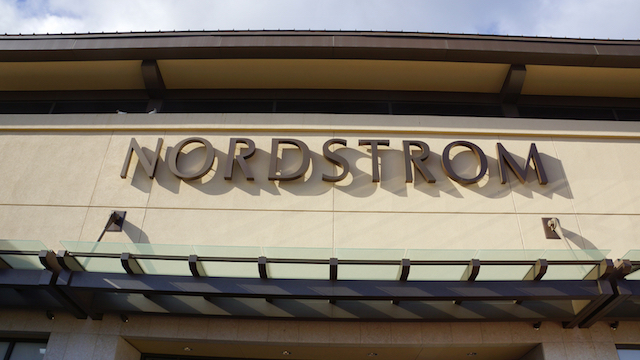Nordstrom US has reported a 3.5 per cent increase in sales while its rival department store chains struggled to maintain turnover.
It was a strong performance, especially when compared with Macy’s, whose past-quarter sales slumped 5.4 per cent, and the embattled JCPenney, where same-store sales fell 1.3 per cent, and a raft of store closures led to a $62 million loss. At least Macy’s posted a huge increase in profit from $11 million to $116 million.
So what is Nordstrom doing right? It’s disciplined and focused, say analysts.
“The company has, for a long time, invested in its retail proposition and has taken sound strategic decisions like the diversification into off-price and the development of an omnichannel plan,” comments Neil Saunders, MD Of GlobalData Retail. “These steps are paying dividends and are ensuring that Nordstrom remains relevant even as the retail sector continues to change rapidly.
“One factor aiding customer retention is a focus on uniqueness and differentiation, especially in fashion.
As many retailers suffer from the withdrawal of premium brands – which they relied on to drive footfall – Nordstrom has actively developed its own proprietary labels. This has allowed the company to stand out in a sea of sameness and has given customers a reason to visit, especially during the company’s big annual sales event,” says Saunders.
“The higher penetration of own label merchandise, along with better inventory management, has helped increase product margin.”
Saunders says it is encouraging that was achieved during a quarter in which the annual sale is held.
“Unfortunately for Nordstrom, better margins did not help the bottom lines, where both operating and net income fell. Higher costs of fulfillment, expense from the new loyalty scheme, and new store openings charges all diminished profit over the prior year. As disappointing as this is, some of this expense – especially that associated with store openings and the loyalty scheme – should moderate over the rest of the year.”
Multichannel working
The company’s co-president Blake W Nordstrom told analysts on Thursday the company does not measure its success by offline and online, but by full-line and off-price brands.
“The combination of our physical and digital assets represents a competitive advantage. Our local market assets, our stores, salespeople, product and services, are the core of our brand and play an important role in engaging with our customers. Nearly 80 per cent of customers who shop with us across multiple channels began in our stores.”
Saunders says “incredibly strong growth” online of both the full- and off-price divisions compensated for a 4.4 per cent decline in same-store brick-and-mortar sales during the quarter, and a 1 per cent decline at physical Rack outlets.
“It is certainly the case that online is cannibalising store sales to some degree, but the most important point is that across all of its channels, Nordstrom is doing a good job of retaining customers and their spend.”
Caution ahead
But Saunders warns that while Nordstrom has outperformed the overall department store market, it remains in a very challenging retail sector, as is evidenced by the continued forecast of flat full-year comparable sales growth.
“This underscores the fact that future performance will be variable – with the next quarter being especially difficult as the company comes up against tough prior year comparatives. Constant growth may not be the order of the day, but it remains clear to us that Nordstrom is on a much better trajectory than most other players in the department store segment.”
“Nordstrom should not be tarred with the same brush as other department stores. The market should recognise its difference and its efforts to stay ahead of the pack.”






